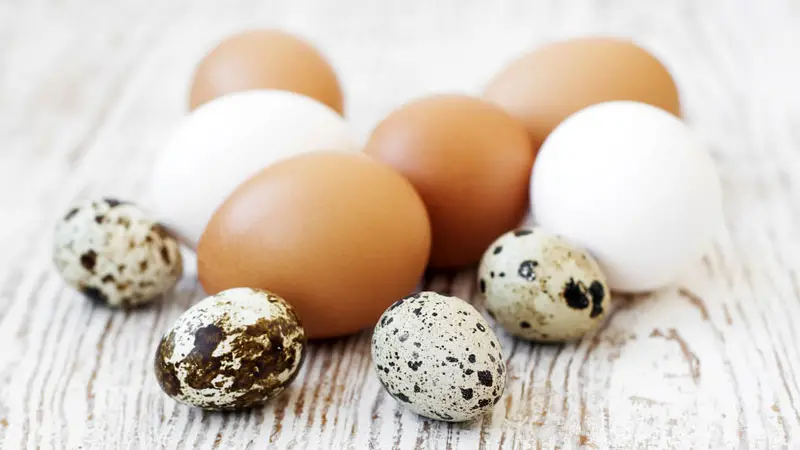There are lots of different sizes and colors of eggs. Although they mostly are of the same shape, when shopping for them you may ask yourself what their recipe is, what will they be used for? Among other questions.
While most of us have only cooked and eaten chicken eggs you’d find from your grocery store, there’s a whole world of eggs out there including different types of chicken eggs as well as other animals. Here are some eggs worth knowing about whether preparing them fried, scrambled, in an omelette, or on top of a warm bagel.
See Also: Different Types of Caviar (Fish Eggs)
Types of Eggs
1. Aracauna Egg

An Aracauna egg is a blue colored shelled egg laid by Chilean domestic chicken. For the past few years, these eggs have become popular sight with farmers. Their blue shells never cease to amaze shoppers who are more accustomed to their white and brown counterparts. Birds that lay these eggs are differentiated with their ear tuft.
2. Cage-Free Egg

Cage-free eggs are eggs laid by hens not held in cages. These eggs are offered protection from predators and provided with fresh air. The chickens laying the eggs are fed wholesome meal that includes all vegetarian feed with no hormones, steroids or antibiotics. Additionally, no animal by-products, processed or recycled foods are given to these hens.
See Also: 23 Kind of Bowls
3. Duck Egg
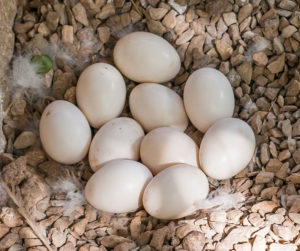
Duck eggs are larger than chicken eggs in that they are usually fifty percent bigger than standard chicken eggs. They come in all colors varying mostly by breed. Due to their larger yolk, these eggs are high in both cholesterol and fat. Additionally, they are also high in protein and have a high concentration of omega three fatty acids.
4. Omega-3 Egg
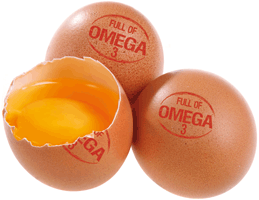
Omega-3 eggs are produced by hens fed on a diet containing flaxseed. When a bird digests this flax some ALA(alpha linolenic acid ) would be broken down into DHA (docosahexaenoic acid)and the fatty acid would be transferred to the yolk. An Omega-3 egg contains three hundred and forty milligrams of ALA acid and seventy-five to one hundred milligrams of DHA acid.
5. Free Range Egg

A free range egg is produced by a bird that may or may not be allowed to walk the outdoor area. The word free range is used differently depending on a country’s relevant and it isn’t regulated in most regions.
6. Organic Egg
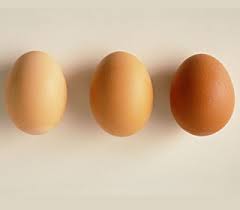
An organic egg is an egg produced through natural means. In this process, the poultry is fed organic feed. The hens laying this type of eggs are required to have access to the outdoor area. Organic egg producers are not expected to use antibiotics unless when there is an infection outbreak.
Read Also: 12 Types of Tortillas
7. Bantam Egg
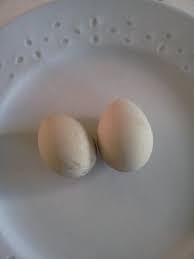
Bantam hens produce these types of eggs. These are chickens well suited for small backyards as they do not require more space as other breeds. These birds lay up to hundred and fifty eggs per year. However, a bantam egg can be about one half to one third the size of a regular egg.
8. Emu Egg
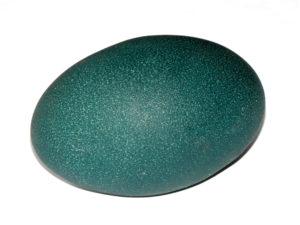
Birds called emu produce these eggs. They are the second largest living birds globally after the ostrich. While ostriches are of African native, these birds are found in Australia and can grow up to six and a half feet tall. They are considered endangered by the New South Wales government.
9. Goose Egg
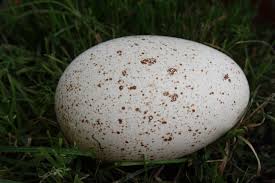
A goose egg is an egg with high yolk to white ratio than a chicken. There is more to it than just its size in that it is more favorable compared to the chicken one.
10. Guinea Fowl Egg
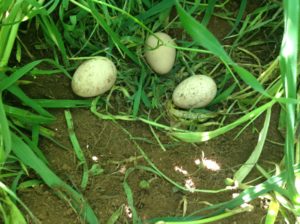
Birds called guinea fowl hatch these eggs. The birds are available in different colors and patterns. They also have smooth looking shiny large bodies with small bald heads.
11. Gull Egg
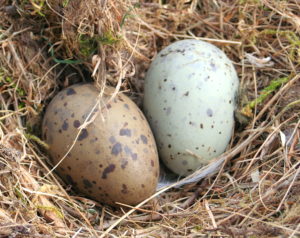
These are eggs produced by herring gulls. The birds are known to live long with the oldest reaching a maximum age of forty-nine years. These birds live in large and densely packed colonies.
12. Turkey Egg

These are eggs laid by turkeys. Contrary to a chicken hen that produces one egg almost every day. A turkey can produce two eggs per week. Additionally, while chickens would begin to lay their eggs at the age of five months, turkeys do not have their first cycle until after two months.
13. Quail Egg

Quail eggs are considered to be a delicacy in different parts of the world. They can be cooked in sushi as Tamago or used as raw in cuisine. In some countries, they are considered less exotic.
14. Pheasant Egg
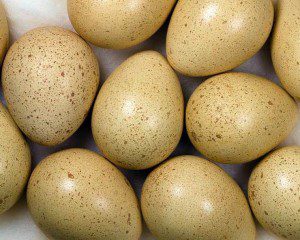
A pheasant bird produces this type of egg. This is a favorite game bird and is believed to be most widespread and ancient globally. It is world’s most hunted bird.
15. Rhea Egg
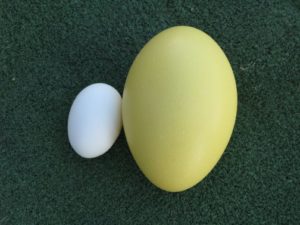
These eggs are produced by birds that closely resemble ostriches thus are called American ostrich. The eggs are light in weight and fluffier than those of hens but have a strong flavor.
16. Ostrich Egg
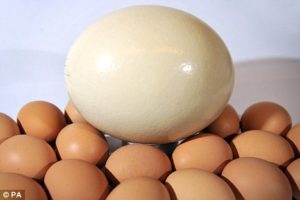
An ostrich egg is an oval shaped egg with a glossy and porcelain like shell-pitted with pores. The egg varies in size shape and weight. The average size of an ostrich egg is about six inches in diameter and weighs up to 3 pounds.
17. Peafowl Egg

A peafowl egg can be hatched in several ways. One way is through the artificial incubation method where the eggs would be kept at a hundred degree temperature thus enabling them to hatch after thirty days of incubation, while the natural incubation would involve allowing the peahen to set her eggs and hatch them herself.
18. Robin Egg
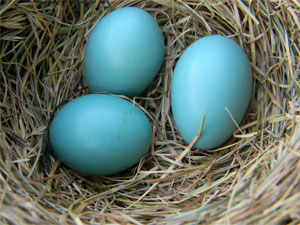
This egg has a shade of greenish blue color. The bird producing it is called a mother robin. She would start incubating her eggs during evenings and sit on them for fourteen days.
Conclusion
Eggs are well liked due to their health benefits which include weight management, cognitive development, and eyesight protection. So make those eggs, grab your fork, and enjoy breakfast!

